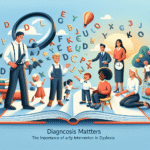Introduction
Imagine you are called to testify in a court case, having witnessed a crime that shocked your community. You step up, confident that your memories of the event are clear and accurate. However, what if I told you that your recollections, once thought to be the strongest evidence, may be flawed? Misremembered Justice: The Dangers of Eyewitness Testimony in Court is a topic that profoundly impacts lives, influencing verdicts and shaping the justice system. In a world where every detail matters, understanding the complexities of human memory can be crucial to ensuring justice is served.
In this article, we will explore the mechanisms behind eyewitness testimony, the fallibility of human memory, notable case studies, and the vital reforms needed to enhance the integrity of our judicial system. Let’s dive deep into Misremembered Justice and unveil the hidden dangers of relying on eyewitness accounts.
Understanding Eyewitness Testimony: The Mechanism of Memory
The Complexity of Memory Formation
Memory is not a perfect recording; it is a dynamic process influenced by various factors, including emotion, perception, and social context. When an eyewitness observes an event, their brain captures fragments of information, which are then reconstructed during recall. This process can lead to what psychologists call misremembering, where individuals unintentionally alter details in their memories.
The Role of Stress and Emotion
High-stress situations can significantly impact memory accuracy. Research indicates that intense emotions can impair a person’s ability to focus and remember specific details. Consequently, an eyewitness under stress may overlook critical elements or incorrectly remember individuals involved in the incident. This emotional overlay adds a level of complexity to the reliability of eyewitness accounts.
Case Studies of Misremembered Justice
The Central Park Five
One of the most infamous examples of wrongful conviction influenced by faulty eyewitness testimony is the case of the Central Park Five. In 1989, five teenagers were wrongfully accused of raping a jogger in Central Park. Their confessions were coerced, and subsequent eyewitness accounts were riddled with inaccuracies. DNA evidence later exonerated all five, illustrating how Misremembered Justice can lead to devastating consequences.
Analysis: This case highlights the profound impact of coercion and suggestive questioning on memory recall. Not only does it underscore the dangers of relying solely on eyewitness testimony, but it also calls for reforms in police interrogation techniques.
The Conviction of Ronald Cotton
Another significant case is that of Ronald Cotton, who was wrongfully convicted of rape based on the eyewitness testimony of Jennifer Thompson. Thompson identified Cotton in a police lineup, but years later, DNA evidence proved his innocence. This case pivotally exemplifies the fallibility of eyewitness identification.
Analysis: This situation stresses the importance of corroborating evidence alongside eyewitness accounts. The reliance on a single testimony can lead to grave injustices, as seen in Cotton’s experience.
The Science Behind Eyewitness Misidentification
Memory Distortion Phenomena
The study of eyewitness testimony reveals several psychological phenomena that give rise to misremembered justice. Among them are:
- Misinformation Effect: Subsequent information provided after an event can alter a person’s recollection.
- Confirmation Bias: Witnesses may favor information that confirms their initial memory, leading to false recollections.
- Cross-Race Effect: Identifying individuals of a different race can be more challenging, often leading to increased errors.
These phenomena collectively contribute to the unreliability of eyewitness testimony, posing significant challenges to justice.
Statistics on Eyewitness Misidentification
| Statistic | Source |
|---|---|
| Eyewitness misidentification in wrongful convictions: 70% | The Innocence Project |
| False memories reported in high-stress situations: 25% | Psychological Science |
| Percentage of wrongful convictions involving eyewitness testimony: 73% | National Registry of Exonerations |
Reforming Eyewitness Testimony Practices
Implementing Best Practices
To mitigate the risks associated with eyewitness testimony, several best practices can be implemented:
Blind Testing: Officers should not know the suspect’s identity during a lineup to avoid influencing the witness.
Immediate Documentation: Eyewitness accounts should be documented immediately, reducing the risk of memory distortion.
Use of Technology: Video recordings of lineups and interviews can provide invaluable context and reduce coercive practices.
- Educating Jurors: Jurors must be informed about the potential fallibility of eyewitness testimony to weigh it appropriately during trials.
The Importance of Corroborating Evidence
Relying solely on eyewitness accounts can lead to misremembered justice. Therefore, corroborating evidence—such as forensic evidence, alibis, or surveillance footage—should always be sought to strengthen cases.
The Role of Forensic Evidence
Forensic evidence stands as the gold standard in validating or disputing eyewitness claims. The convergence of forensic and eyewitness evidence serves to create a fuller picture of events, enhancing the accuracy of outcomes in court.
Conclusion: Moving Toward a Just Future
Misremembered Justice: The Dangers of Eyewitness Testimony in Court is not just a legal issue; it is a societal dilemma demanding our attention. By acknowledging the fallibility of human memory and implementing effective reforms, we can work towards a more reliable justice system.
As individuals, we must advocate for changes that promote accurate recollections and protect the innocent. In a world where every detail matters, arming ourselves with knowledge and understanding can be pivotal in preventing wrongful convictions.
FAQs
1. Why is eyewitness testimony considered unreliable?
Eyewitness testimony is often unreliable due to factors like stress, leading to the distortion of memories, suggestion from officials, and cognitive biases that affect identification accuracy.
2. How prevalent is misidentification in wrongful convictions?
About 70% of wrongful convictions involve eyewitness misidentification, highlighting the significant impact of unreliable testimonies in the legal system.
3. What can be done to improve eyewitness testimony practices?
Practices such as blind lineup testing, immediate documentation of witness accounts, and educating jurors about the potential inaccuracies can enhance the reliability of eyewitness accounts.
4. How do emotions affect memory recall?
High-stress and emotional situations can impair clear memory formation and recall, often leading to inaccuracies and gaps in the eyewitness narrative.
5. What alternative evidence should be sought alongside eyewitness testimony?
Corroborating evidence, including DNA, physical evidence, digital data (like CCTV footage), and credible alibis, should be prioritized alongside eyewitness accounts to strengthen the integrity of the case.
By fostering a deeper understanding of the intricacies of human memory and advocating for systemic reforms, we can begin to remedy the injustices born from misremembered testimonies. Together, let’s strive for a justice system that values truth over memory.

















